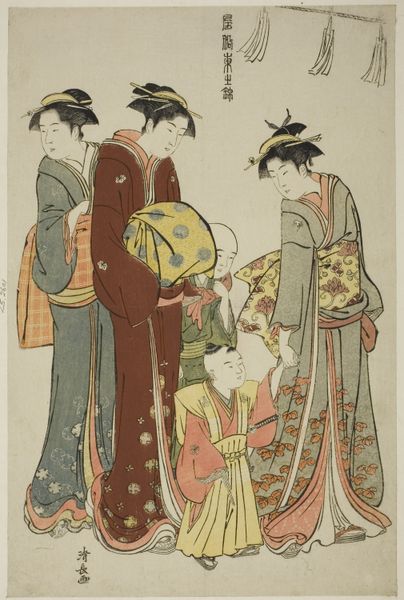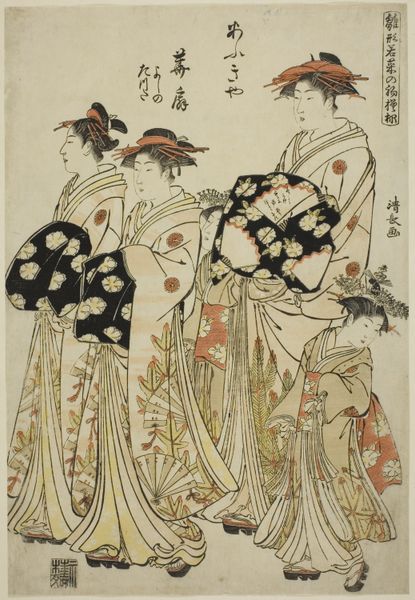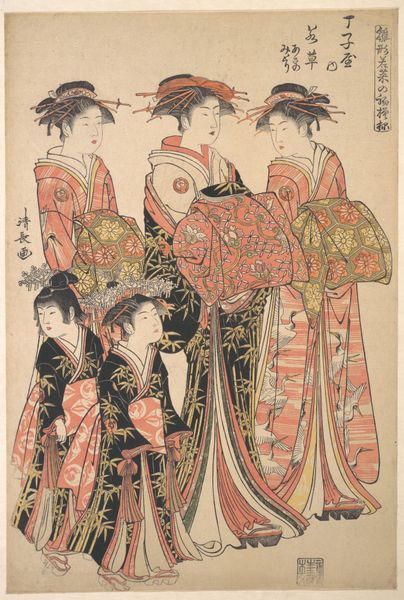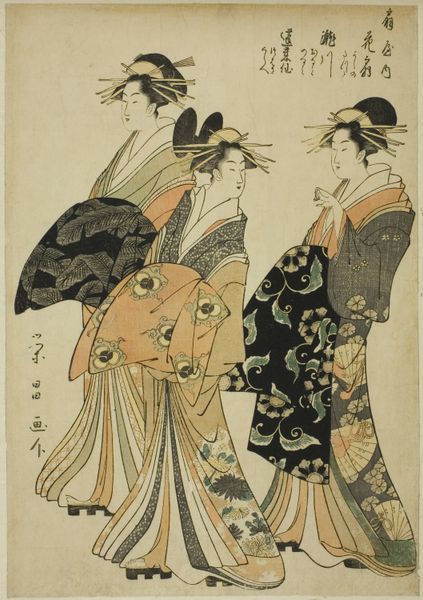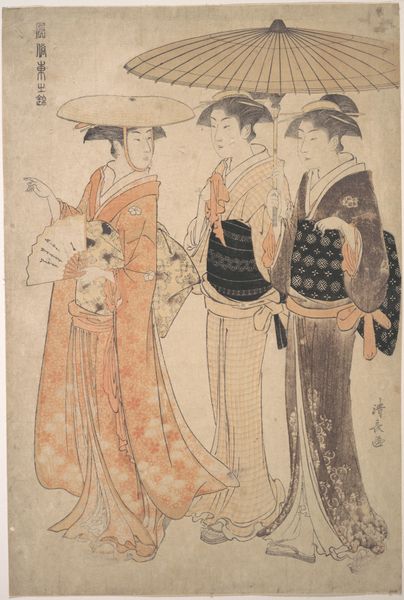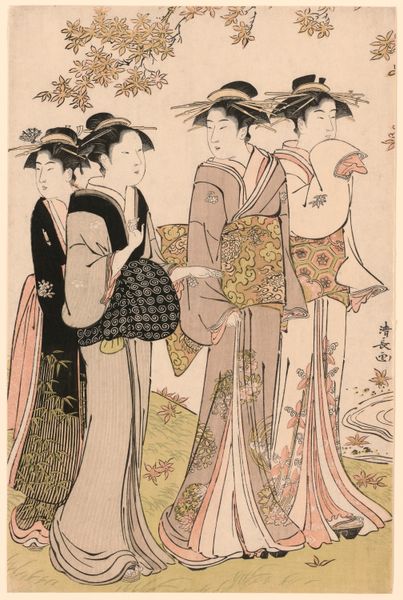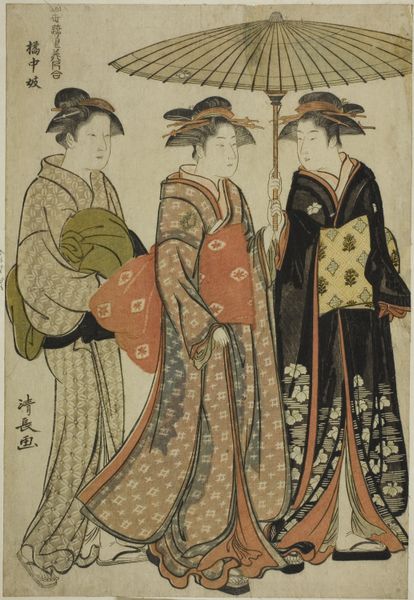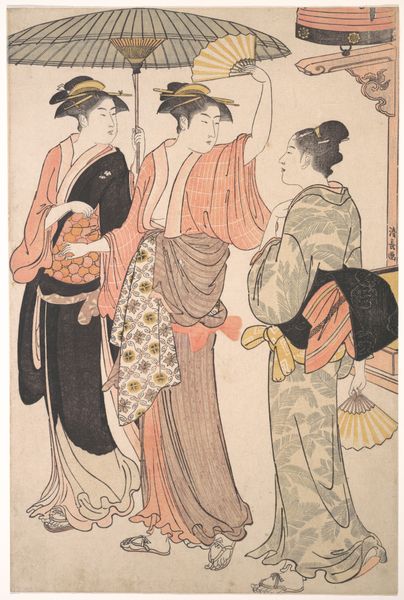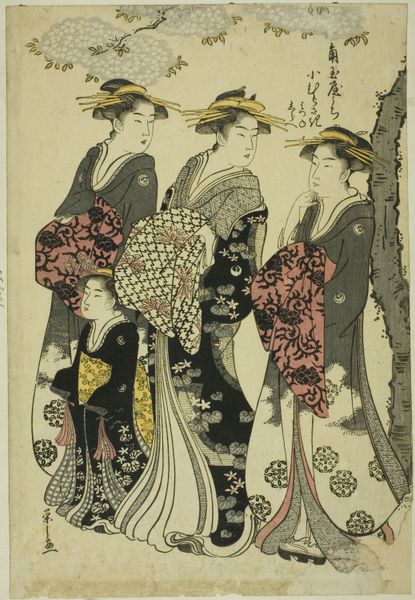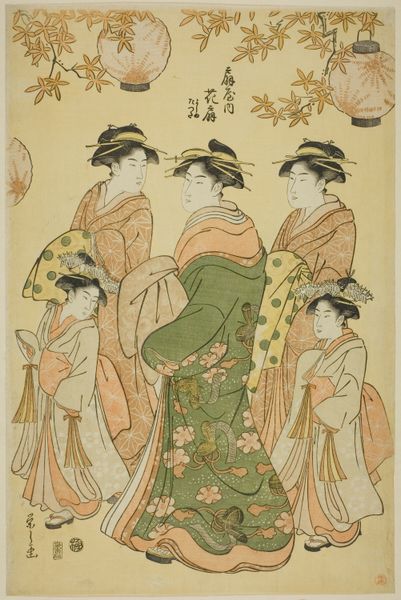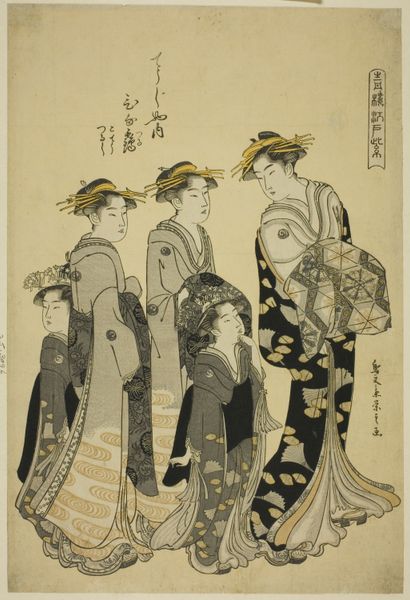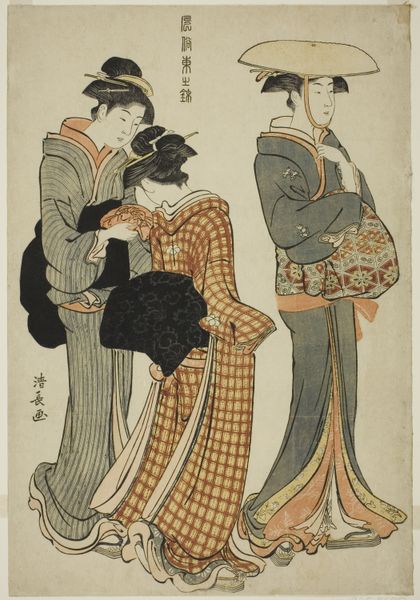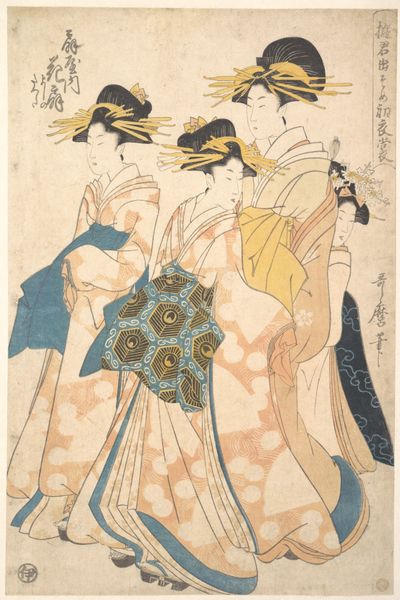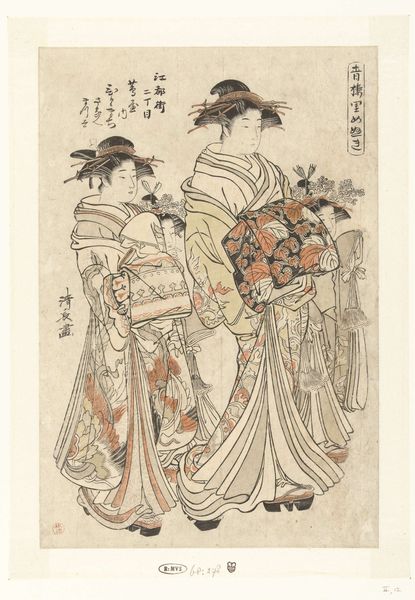
The Courtesan Maizumi of the Daimonjiya with Her Attendants Shigeki and Naname, from the series "Models for Fashion: New Designs as Fresh as Young Leaves (Hinagata wakana no hatsu moyo)" 1782
0:00
0:00
#
portrait
# print
#
asian-art
#
ukiyo-e
#
japan
#
figuration
Dimensions: 39.2 × 26.2 cm
Copyright: Public Domain
Curator: Oh, isn’t that Maizumi just floating with such grace? It reminds me a bit of observing how fashion trends reflect social and cultural aspirations through individual presentation. Editor: There's an unexpected coolness in the color palette here. Creamy yellows and grays with strategic bold accents… it’s peaceful, like a soft whisper in the middle of a busy street. Curator: What you’re seeing, that controlled serenity, is really Torii Kiyonaga masterfully employing ukiyo-e techniques. This woodblock print, made in 1782, comes from a series exploring the fashionable courtesans of the time—an intimate study of identity within rigid social roles. This one is called “The Courtesan Maizumi of the Daimonjiya with Her Attendants Shigeki and Naname, from the series Models for Fashion: New Designs as Fresh as Young Leaves.” Editor: New designs... like a Vogue cover for the Edo period, ha! The detail in their clothing is captivating. There are all those delicate floral and cloud patterns in her kimono... yet the two attendants have distinctly less intricate, but complementary robes, suggesting status differences. It’s more than just an aesthetic choice, right? Curator: Precisely! The courtesans’ elaborate hairstyles and makeup—all indicators of elevated social status. The gaze itself embodies carefully cultivated passivity, and one must read the print as a performance of these societal expectations. Their agency, circumscribed yet ever-present, whispers across the ages to our understanding of identity performance today. Editor: I like the "whisper." I think if this were a symphony, it would be played entirely with string instruments: harmonious, subtle… almost haunting, especially with that perfectly still composure in everyone’s posture. Curator: The haunting quality is perhaps inevitable when viewing any depiction of human life suspended within time and art—an echo of presence and the layers of cultural history imbued within a single piece. Editor: Looking at this piece through that lens gives me the feels for our shared yet ephemeral humanity. So many echoes bouncing. Curator: An exploration and excavation—of past made present.
Comments
No comments
Be the first to comment and join the conversation on the ultimate creative platform.
